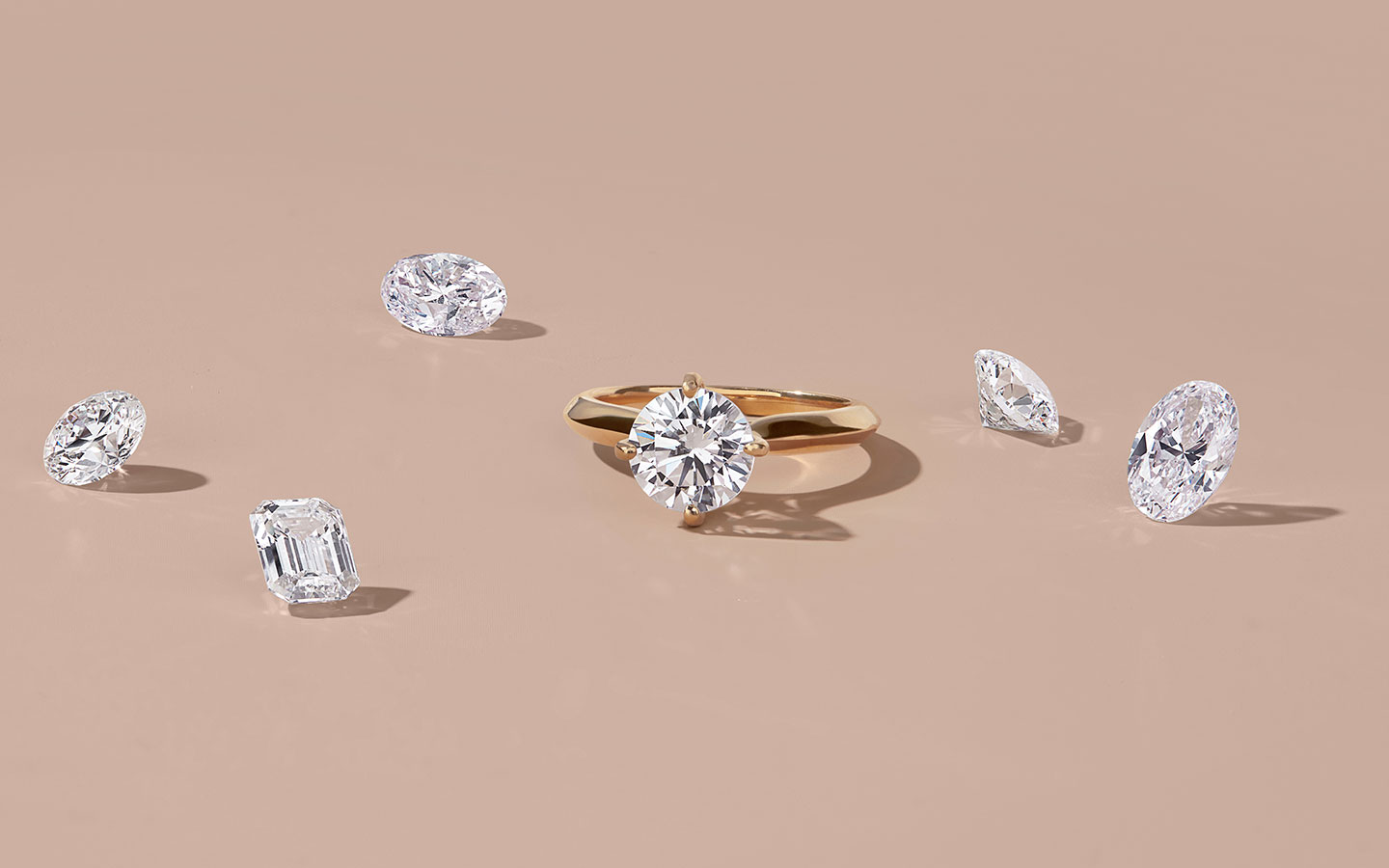Lab-grown diamonds have surged in popularity over the past decade. With identical physical, chemical, and optical properties to natural diamonds, they present an attractive alternative for consumers seeking ethical and budget-friendly options. However, just like natural diamonds, lab diamonds are evaluated based on the 4Cs: Cut, Color, Clarity, and Carat. Understanding these criteria is crucial for making an informed purchase. Let’s delve into each aspect in detail.
The Importance of Cut in Lab Diamonds
The cut of a diamond is arguably the most important of the 4Cs. It refers not only to the shape of the diamond but also to how well the diamond has been faceted, proportioned, and polished. The cut affects a diamond’s brilliance, sparkle, and overall aesthetic appeal.
Types of Diamond Cuts
- Round Brilliant Cut: The most popular and classic diamond shape, known for its exceptional brilliance.
- Princess Cut: A modern, square shape that is also highly brilliant.
- Emerald Cut: A rectangular shape with step cuts, known for its sophisticated and elegant look.
- Oval Cut: An elongated round shape that gives the illusion of a larger diamond.
- Cushion Cut: Known for its rounded corners and large facets, giving a soft, romantic appearance.
Cut Quality Grades
The Gemological Institute of America (GIA) grades diamond cuts as Excellent, Very Good, Good, Fair, and Poor. An Excellent or Very Good cut ensures maximum brilliance and fire, making the diamond more visually stunning.
Color Grading in Lab Diamonds
The color of a diamond refers to the presence of any hue within the stone. Lab diamonds, like natural ones, are graded on a scale from D (colorless) to Z (light yellow or brown).
Color Grade Categories
- Colorless (D-F): These diamonds are extremely rare and highly sought after. They are the most expensive due to their rarity and exceptional quality.
- Near Colorless (G-J): These diamonds appear colorless to the naked eye and offer excellent value for money.
- Faint (K-M): These diamonds have a slight hint of color, which is visible under close inspection.
- Very Light (N-R): The color in these diamonds is more noticeable and they are less expensive.
- Light (S-Z): These diamonds have an obvious color and are the least expensive.
When choosing a lab diamond, aim for a color grade that balances beauty with budget. G-H diamonds are often a sweet spot for their near-colorless appearance and more affordable price.
Clarity: Evaluating Inclusions and Blemishes
Clarity refers to the presence of internal or external imperfections within a diamond. Lab-grown diamonds are created under controlled conditions, leading to fewer inclusions compared to natural diamonds.
Clarity Grades
- Flawless (FL): No inclusions or blemishes visible under 10x magnification.
- Internally Flawless (IF): No inclusions visible under 10x magnification, only minor surface blemishes.
- Very Very Slightly Included (VVS1, VVS2): Inclusions are extremely difficult to see under 10x magnification.
- Very Slightly Included (VS1, VS2): Inclusions are difficult to see under 10x magnification.
- Slightly Included (SI1, SI2): Inclusions are noticeable under 10x magnification but not to the naked eye.
- Included (I1, I2, I3): Inclusions are obvious under 10x magnification and may affect transparency and brilliance.
For most buyers, a diamond in the VS1 to SI2 range provides a good balance of clarity and cost. Inclusions in this range are not visible to the naked eye lab diamonds, ensuring a beautiful diamond without the premium price of flawless stones.
Carat: Understanding Size and Weight
Carat weight measures the size of the diamond. One carat is equivalent to 200 milligrams. The carat weight directly impacts the diamond’s price, with larger diamonds being rarer and more valuable.
Carat and Size Perception
While carat weight is a clear indicator of a diamond’s size, the perceived size can also be influenced by the cut and shape of the diamond. For example, a well-cut diamond can appear larger and more brilliant than a poorly cut diamond of the same carat weight.
Choosing the Right Carat Weight
Consider personal preference and budget when selecting the carat weight. A slightly smaller diamond with an excellent cut can often be more stunning than a larger diamond with inferior cut quality. Balancing carat weight with the other Cs ensures a beautiful and well-proportioned diamond.
Ethical and Environmental Benefits of Lab Diamonds
Lab-grown diamonds offer significant ethical and environmental benefits. They are created in controlled environments using sustainable practices, eliminating the issues associated with traditional diamond mining, such as environmental degradation and unethical labor practices.
Sustainable Practices
- Reduced Carbon Footprint: Lab diamonds are produced with a significantly lower carbon footprint compared to mined diamonds.
- Resource Efficiency: The production process requires fewer resources, such as water and energy.
- Ethical Production: 4Cs lab diamonds are guaranteed conflict-free, ensuring ethical sourcing and labor practices.
Certification and Transparency
Reputable lab-grown diamond producers provide certification from recognized gemological laboratories, ensuring the authenticity and quality of each diamond. This transparency gives consumers confidence in their purchase and supports informed decision-making.
Conclusion: Making an Informed Choice
Understanding the 4Cs of lab-grown diamonds—Cut, Color, Clarity, and Carat—is essential for selecting the perfect diamond. Each aspect plays a critical role in determining the diamond’s overall appearance, quality, and value. By balancing these factors with personal preferences and budget, consumers can make an informed and satisfying purchase.


